You can’t say that people in the USSR didn’t know what spinach was. But they had a very superficial knowledge of it — often just from pictures in their grandmothers’ cookbooks. We can’t remember a single spinach recipe from the Soviet period.
But before socialism, spinach was the Russian dream.
You might say your dream is as marvelous as the sunrise. Or rose petals. Our mountain peaks.
In the 19th century Russians compared everything to spinach.
We don’t understand it. In dozens of books and cooking manuals we’d find the phrase: “this can be subsituted for spinach.” They seemed to use everything in place of spinach. Even a cursory search gives a long list of substitutes: nettle, sorrel, chard, swede, and so on.
And it wasn’t just in the capital cities. Spinach was incredibly popular throughout the country and in every stratum of Russian society. It all started back with a private school botany textbook. “The young leaves of comfrey (Latin: Sýmphytum) are used instead of spinach, and when grown in the shade, its shoots are like asparagus.”
The author of “Lexicon of the Urban and Rural Economy” (1838) wrote the same about sorrel: “its young leaves can be used instead of spinach.”
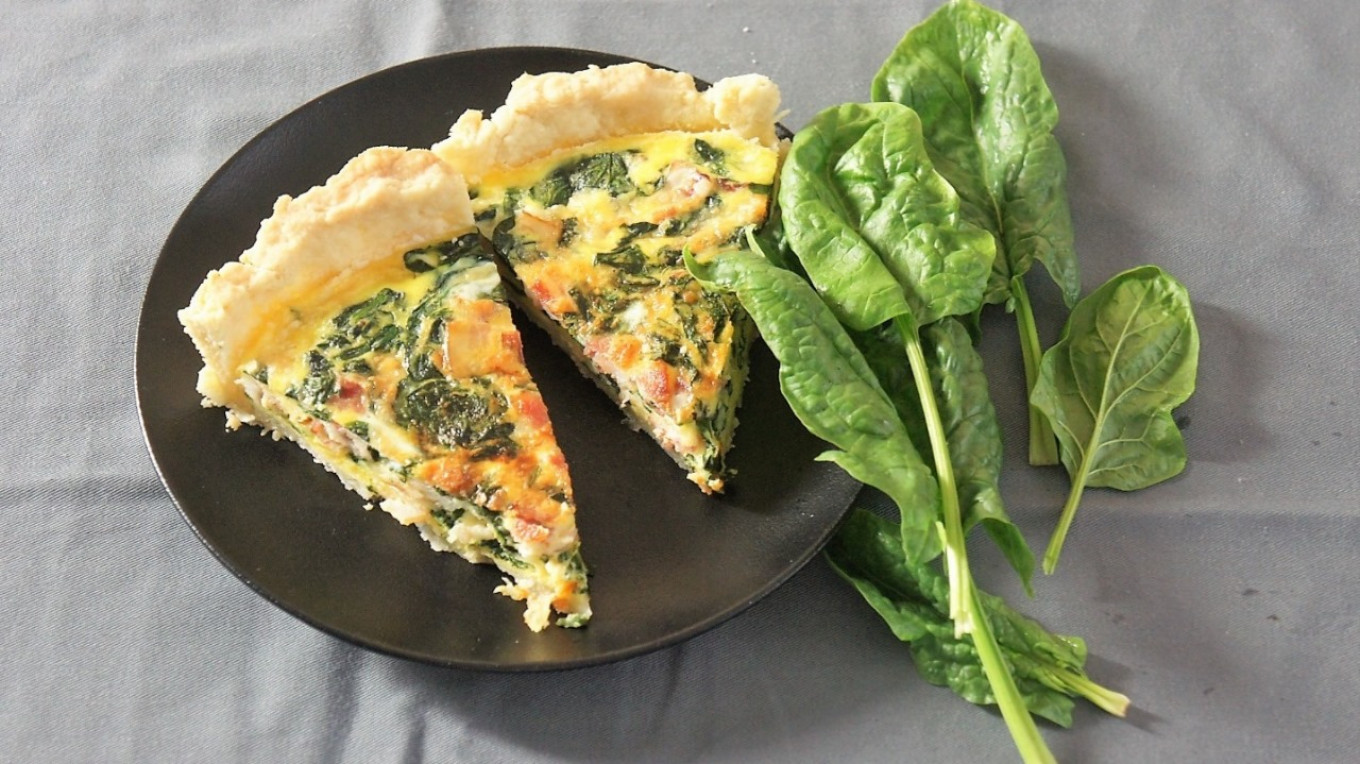
The same year the collection “Country Homeowner” recommended using orache (a variety of quinoa called лебеда) instead of spinach: it is “used for sauces in place of spinach.” Well, we don’t know about that. The last thing we’d use in sauces is the barely digestible orache.
Agriculture manuals add unexpected twists to the theme. “The leaves of chard are used like spinach,” notes the 1895 edition of “A Manual of Growing Vegetables.”
And doctor’s manuals advise even stranger substitutes: nettles. It’s not that we don’t like young nettle leaves, but again we see it can be used “for sauces in place of spinach.” What is this strange obsession?
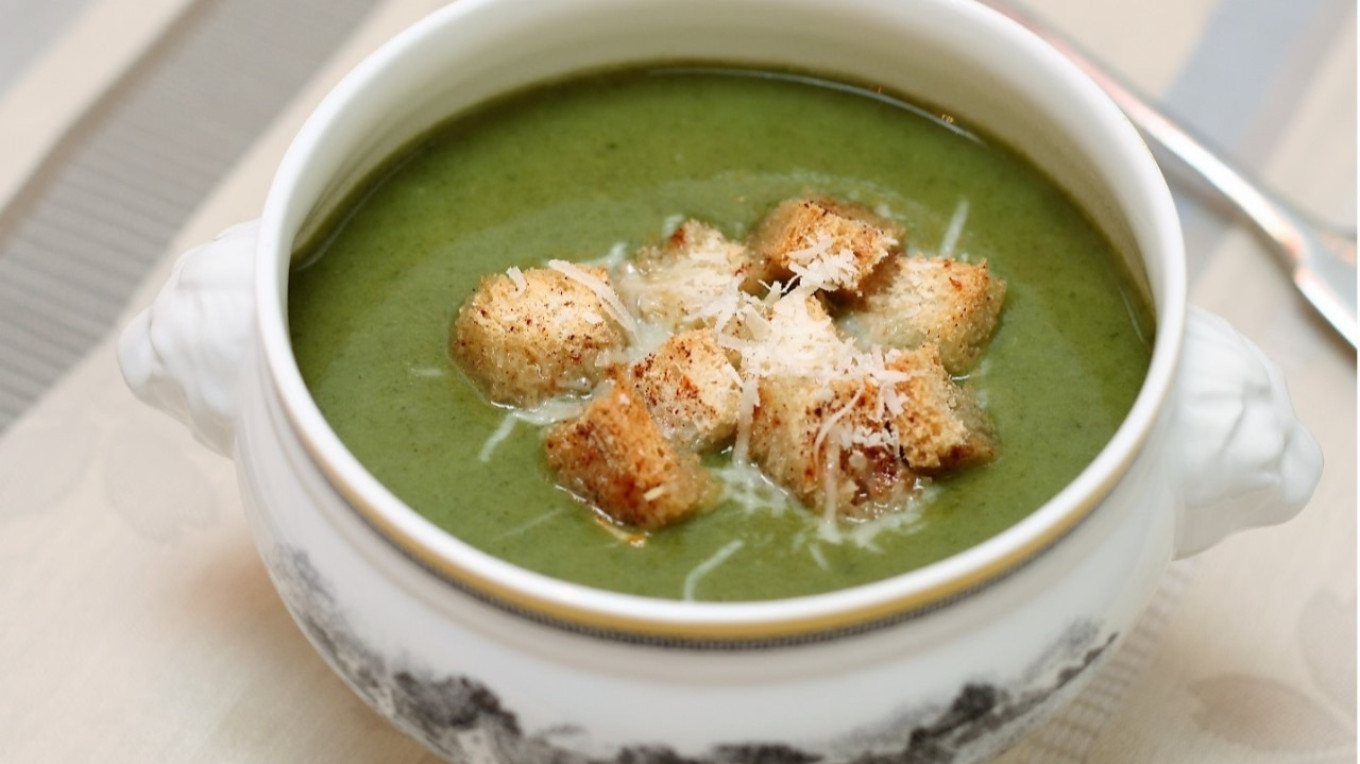
And finally, the description of the life of Russian settlers in Yakutia in 1887 completes this odd habit. Yes, yes, you guessed it. There, too, they found their own version of spinach: “Russians use sorrel leaves instead of spinach.”
Why Russians were so obsessed with spinach is a complete mystery, especially considering the huge variety and number of wild vegetables and fruits traditionally eaten in Russia. Perhaps at some point spinach became a fashionable symbol of haute cuisine, and it became a sign of good taste to be compared to it.
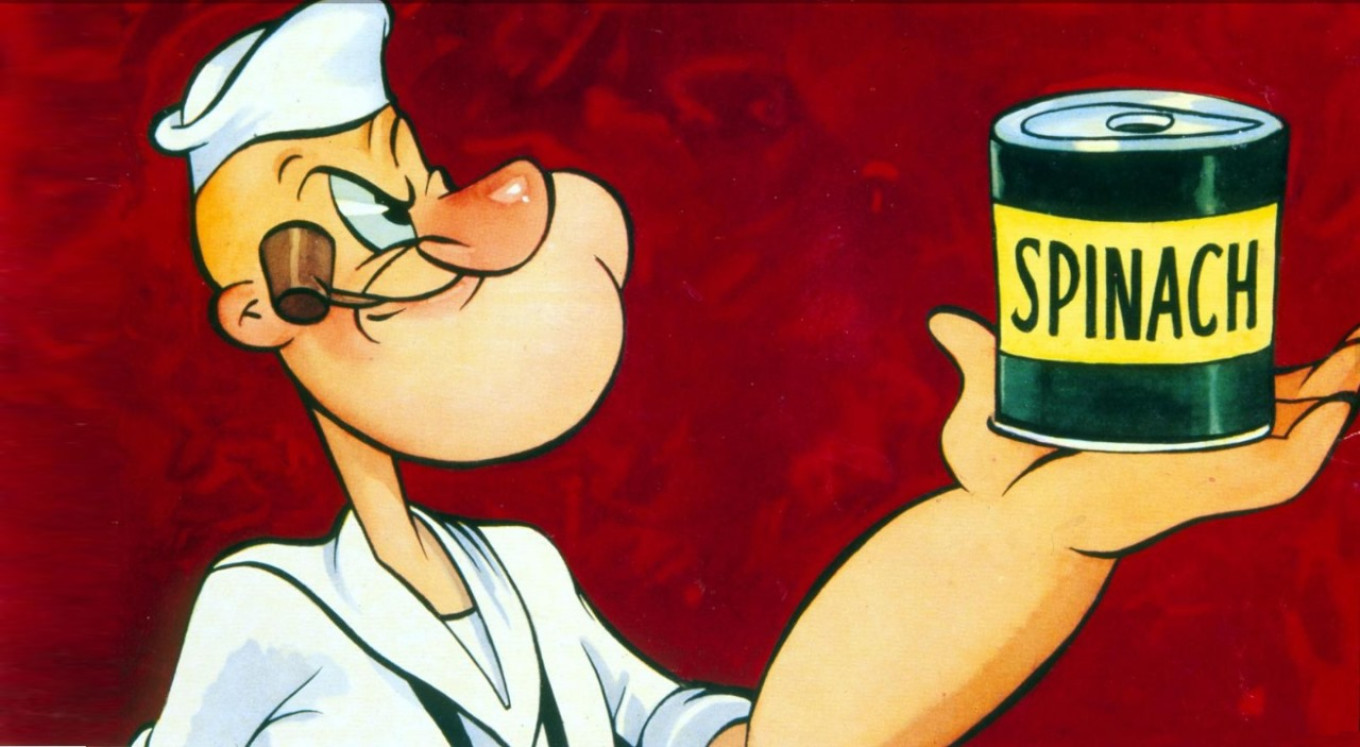
Curiously enough, Russians aren’t the only ones who fell victim to the allure of spinach. Millions of children who watched cartoons about Popeye the Sailor also believed that these leaves had almost magical powers.
In pre-war America, this comic book and cartoon character, who ate a huge amount of spinach, was very popular. Popeye’s creator, artist Elzie Segar, chose spinach to promote healthy eating among children. It worked: US spinach consumption went way up, and in gratitude agronomists erected monuments to Popeye in several states.
The myth of spinach’s miraculous properties was just that — a myth with no scientific evidence. But all the same, spinach contains a lot of substances necessary for our body. And so we decided we needed to make a spinach pie.
Spinach pie with puff pastry
Ingredients
For the dough:
- 400 g (14 oz. or 2 ½ c) wheat flour
- 200 g (7 oz. or 1 ¾ sticks ) cold butter
- 12 Tbsp ice water
- pinch of salt
or
- 500 g (about 1 lb) ready-made puff pastry
For the filling:
- 4 eggs
- 250-300 g (about 10 oz.) spinach leaves
- A small bunch each of dill, parsley, green onion
- 250 g (1 c) low-fat pot cheese (or well-drained cottage cheese)
- 100 g (3.5 oz) brynza or feta
- 2 Tbsp breadcrumbs
- Salt, pepper and ground nutmeg to taste
- Vegetable oil or butter to grease the pie pan.
Instructions
For this pie you can use store-bough puff pastry. But, of course, homemade is better. Here is our very simple and time-tested recipe.
- For the dough put the water in the freezer for 10 minutes so it is very cold. The butter should also be cold.
- On a table or large cutting board, mix flour and salt. Then put the butter in the flour and chop it up with a wide knife while mixing the pieces of butter with the flour. You should get buttery crumbs — they shouldn’t be finely chopped.
- Make a depression in the butter crumbs and pour in the ice water. Quickly knead the dough. You don’t need to work with the dough for a long time! Just knead it enough to gather the dough into a lump, which you can do with the knifetip. The dough should not look homogenous; the pieces of butter will play their part and separate the dough. Divide it into two unequal parts, wrap it in foil and put it in the refrigerator for at least 1 hour.
- If you are using store-bought dough, just take it out of the refrigerator and make the filling while it warms up.
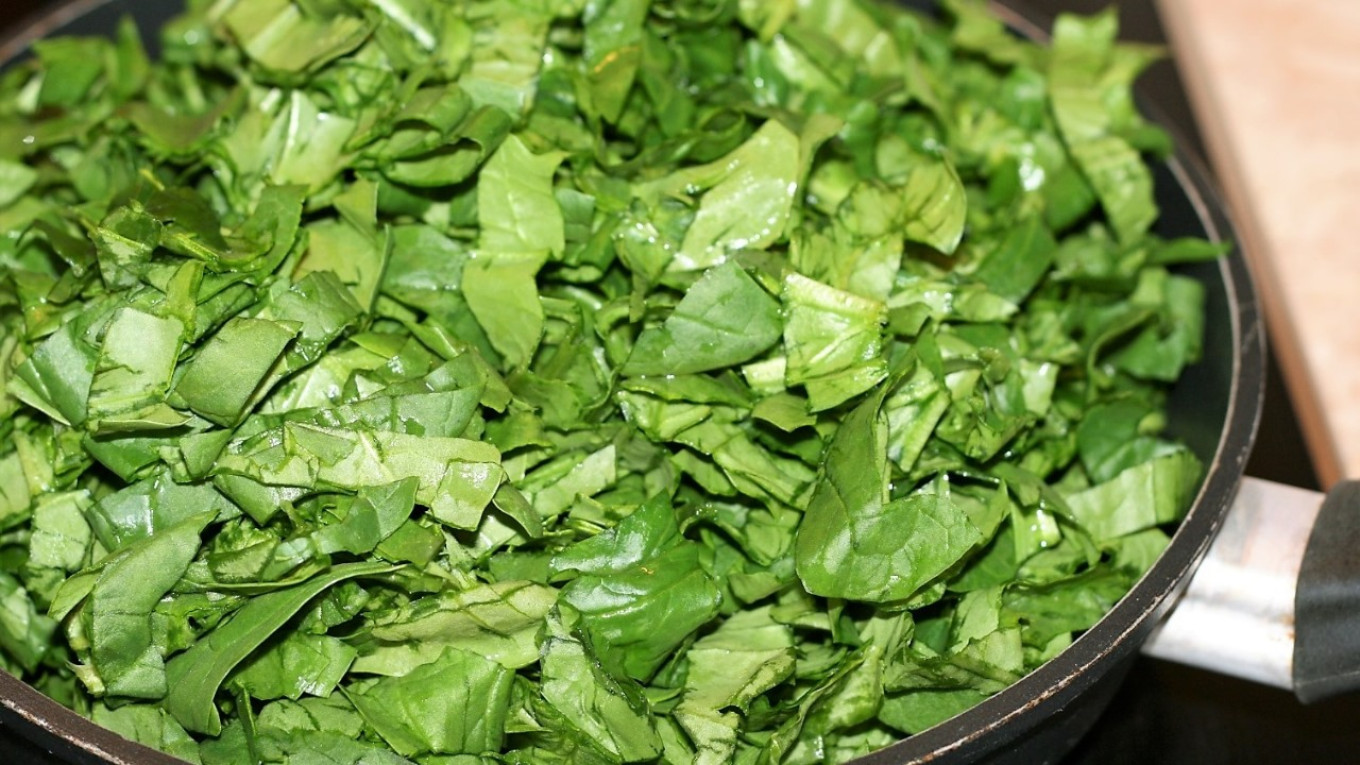
- Boil 3 eggs so that they are hard-boiled: 12 minutes in boiling water. Let them cool and then chop finely.
- While the eggs are boiling, prepare the spinach: wash and finely chop it, put it in a saucepan, pour in no more than 2 Tbsp water and heat it. It will cook very quickly.
- Sieve and transfer to a bowl, add olive oil, salt, pepper, grated nutmeg. Finely chop the herbs and add them to the spinach. Mix everything.
- Turn on the oven to preheat to 190°C/375°F. Grease the pie pan with vegetable oil.
- Rub the cottage cheese with raw egg and bryndza/feta. Chop the boiled eggs finely. Mix all the components of the filling. Now assemble the pie.
- If you are using homemade dough, take it out of the refrigerator. Roll out two pastries, one slightly larger than the other. Place the larger one on the bottom of the pan and sprinkle it with bread crumbs.
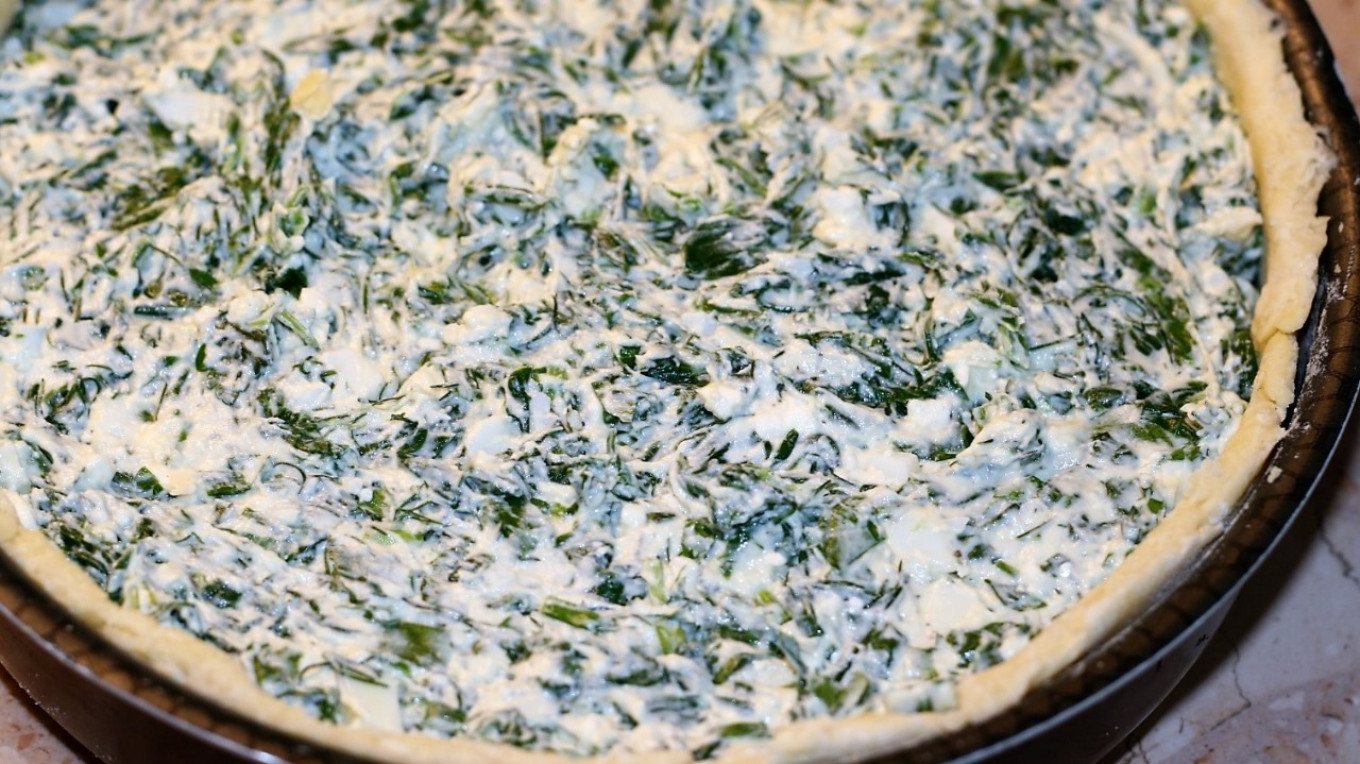
- If you are using store-bought puff pastry, it is usually a square, so you need to cut into two uneven pieces and then trim the corners. Form two pastries as above. Place the larger piece of pastry on the bottom of the pan and sprinkle with breadcrumbs.
- Spread the filling, cover the pie with a smaller layer, trim the edges to fit the shape and pinch. You can cut out decorations from the scraps of pastry if you wish. Brush the top of the pie with melted butter and bake for 40-45 minutes until the crust is browned.
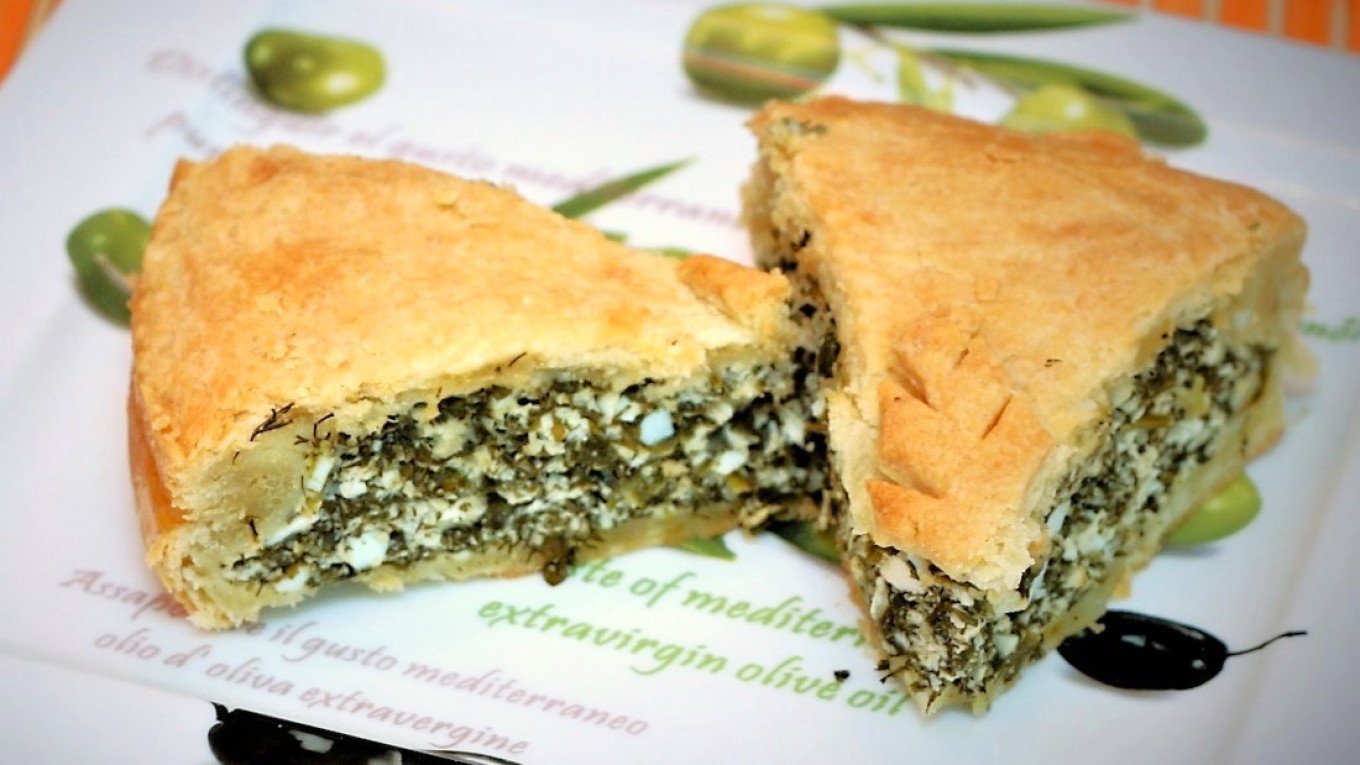
… we have a small favor to ask.
As you may have heard, The Moscow Times, an independent news source for over 30 years, has been unjustly branded as a “foreign agent” by the Russian government. This blatant attempt to silence our voice is a direct assault on the integrity of journalism and the values we hold dear.
We, the journalists of The Moscow Times, refuse to be silenced. Our commitment to providing accurate and unbiased reporting on Russia remains unshaken. But we need your help to continue our critical mission.
It’s quick to set up, and you can be confident that you’re making a significant impact every month by supporting open, independent journalism. Thank you.





